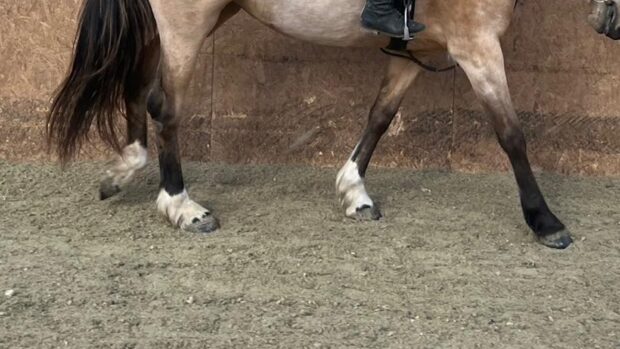The tendon and ligament structures at the back of the pastern are particularly liable to strain injuries, which are commonly caused by over twisting the limb while bearing weight or over extending the lower limb joints.
Damage to one of the branches of the superficial digital flexor tendon is the most common injury, followed by strain of one of the oblique sesamoidean ligaments, although both can be difficult to diagnose.
While these injuries sometimes result in soft tissue swelling on the back and to one side of the pastern, in some horses there is no detectable swelling and there is no signs of pain when firm thumb pressure is applied to the back of the pastern.
Definitive diagnosis is normally based on scans, after the pain has been localised through nerve blocks. It can be difficult to desensitise the entire foot without removing pain from the pastern region, which complicates matters further. Sometimes it is only by the progressive elimination by nerve blocks of the coffin and pastern joints, and by X-raying the foot with negative findings that the injury is found.
Superficial digital flexor tendon injuries are most common in horses that have previously strained the tendon in the cannon bone region, but they can occur without earlier injury.
The tendon branches lie inside and outside the deep digital flexor tendon and, if they are markedly enlarged, it is usually possible to detect the swelling. However, in very recent injuries there may be no swelling or the tendon may be masked by overlying fibrous swelling.
Injuries to the sesamoidean ligaments frequently occur with no detectable soft tissue swelling. Skilled scanning by an experienced vet is essential for definitive diagnosis and to provide an accurate prognosis for pastern, tendon and ligament injuries.
Typical trauma
A direct blow to the back of the pastern may result in severe bruising of the soft tissues and fibrous tissue formation, resulting in a firm lump. While the horse may be lame after the injury, long-term lameness is unusual.
A cut on the back of the pastern is much more serious. Contamination of the tendon sheath must be considered an emergency, because without rapid aggressive treatment, life-threatening infection can develop.
A complete cut through the deep digital flexor tendon will result in the toe of the foot flipping up during weight bearing and partial dislocation of the coffin joint. This is usually a career-ending injury.
A cut through a branch of the superficial digital flexor tendon doesn’t usually result in posture change, but tends to repair by fibrous tissue formation, which can compromise free movement of the tendons and ligaments and therefore causes long-term lameness.
|
||
 |
||


 Get up to 19 issues FREE
Get up to 19 issues FREE TO SUBSCRIBE
TO SUBSCRIBE 


